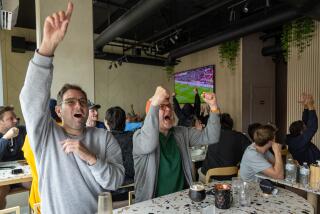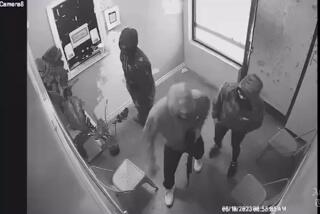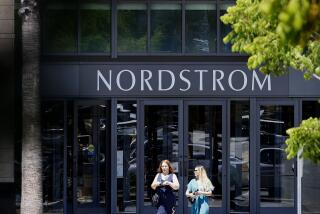Crime Rate and Liquor Outlets Tied : Research: Study finds direct relationship between number of businesses selling alcohol and the level of violent offenses in an area.
A recently released study by a group of USC researchers has found a direct correlation between the number of alcohol outlets in an area and the rate of violent crime.
The study--conducted by Richard A. Scribner, David P. MacKinnon and James H. Dwyer--was the first to scientifically examine the relationship between the density of liquor stores and bars and violent crime rates in the communities they serve. It was carried out over four years.
Using 1990 census figures and data from state agencies, the team studied 74 cities in Los Angeles County and found that each liquor outlet contributed an average of 3.4 violent crimes a year to each city.
The researchers looked at cities with a population of 10,000 or more and examined both on-sale liquor sites, such as bars and restaurants, and off-sale outlets, such as minimarkets and liquor stores. Dwyer, an epidemiologist, said that even by statistically controlling for the variation of unemployment rates in the communities--which is also considered an indicator of crime rates--the findings still showed a connection between the availability of alcohol and crime.
“This is not to single out liquor stores as the No. 1 contributor to violence,” Dwyer said. “But unlike unemployment rates, (the number of alcohol outlets in an area) is something that can be controlled.”
Elliott Birnberg, president of the California Beverage Merchants and owner of OT Liquors in East Los Angeles, disputed the study’s findings and said liquor stores and bars are often havens for crime victims.
Such businesses “are one of the few places that are lit and open late at night and people can come in and say that they have been hurt,” he said.
Birnberg said liquor stores such as his are often scapegoats for people seeking someone to blame for high crime rates. He said that he has worked closely with police to provide a safer atmosphere in his bar’s neighborhood and that it is also important for business that the community have a low crime rate.
“Liquor stores are small-run businesses, and that is what neighborhoods thrive on,” Birnberg said.
Karen Bass, one of the key organizers of a campaign to reduce the number of liquor stores in South-Central Los Angeles, questioned the need for the abundance of such establishments.
“Let’s not negate the fact that South-Central needs commercial activity, but commercial activity that helps, not that drains the community,” she said. Bass joins a number of community activists, politicians and law enforcement officials who say the findings by the USC researchers, which were published last month in the American Journal of Public Health, only confirm what residents of poor communities have been saying for years.
Della Fortuna said she has lived in her South-Central neighborhood for 25 years and has watched alcohol outlets flourish in the area along with crime.
“There have been shootings, stabbings, people getting harassed by drunks,” Fortuna said. “I won’t even let my kids go in (liquor stores) anymore to buy a soda.”
Day One, a community-based organization in Pasadena that deals with problems of substance abuse, joined Pasadena police last year to study arrests over a two-week period and found that alcohol was a factor in many of the arrests involving violent crime.
Cmdr. Mary Schamder of the Pasadena Police Department said the city has had success with a hospitality program that trains restaurant and bar employees how to serve drinks more responsibly. She also pointed to an absence of alcohol served at the Rose Bowl during last summer’s World Cup soccer games and the relatively few arrests during the event as evidence that alcoholic beverages contribute to crime.
“Any time you have alcohol involved there is an increased chance of violence,” Pasadena Police Lt. Bruce Linsenmayer said. “It’s pretty much what you would call a truism.”
Los Angeles City Councilwoman Rita Walters, a longtime advocate of reducing the number of liquor outlets in South-Central, said she hopes to get copies of the study to hand out to lawmakers as proof of the need to control the number of liquor permits allowed. Walters said several lawsuits pending against the city were filed by liquor store owners who do not want to comply with restrictions on rebuilding stores destroyed during the riots.
One South-Central minimarket owner said he resented the portrayal of businesses that sell liquor as “seedy joints” that are magnets for gang members and criminals.
“Stuff happens around these stores, sure,” he said. “But even if we were all gone tomorrow, there would still be crime.”
Both opponents and supporters agree that the study will be heavily relied upon in future debates over the more stringent state and local regulations passed in recent years for obtaining a liquor license.
“The fact that there is now scientific evidence to back up what residents have been saying is critical,” said Sylvia Castillo, associate director of the Community Coalition. “The decision makers are going to have to pay heed.”
More to Read
Sign up for Essential California
The most important California stories and recommendations in your inbox every morning.
You may occasionally receive promotional content from the Los Angeles Times.










